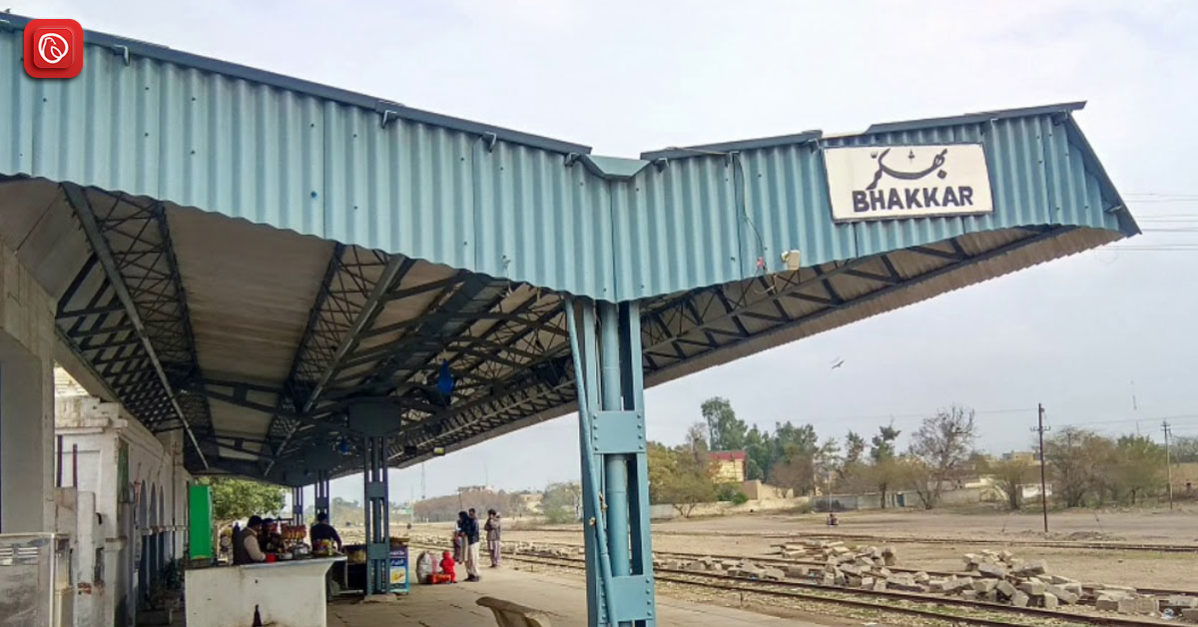
Situated on the banks of the Indus River, Bhakkar is an old city in Pakistan’s Punjab province. The city’s history is extensive, going back to the Mughal Empire. Dates, mangoes, and citrus fruits are Bhakkar’s main products, and they are referred to as the “City of Dates.” Several historical sites may also be found in the city, such as the enormous 17th-century mudbrick fort, Bhakkar Fort. Bhakkar has recently become a tourist destination because of its natural beauty and historical value. Here at Graana.com you will find a thorough guide about Bhakkar City. Continue reading for more information.
| Field | Description |
| Country | Pakistan |
| Province | Punjab |
| Division | Mianwali |
| District | Bhakkar |
| Rank | 86th most populous city in Pakistan |
| Administrative center | Bhakkar Tehsil |
| Coordinates | 31°37′40″N 71°3′45″E |
| Elevation | 522 ft (159 m) |
| Calling code | 0453 |
Bhakkar is a prosperous city located on the left bank of the Indus River in the centre of Punjab province, Pakistan. This city, which is the central hub of Bhakkar District, is situated between latitudes 31° 10′ and 32° 22′ north and longitudes 70° 47′ and 72° east. The origin of Bhakkar, the 86th most populous city in Pakistan, begins where the Indus River’s life-giving waters nourish the land.
Depending on where you start, Bhakkar’s location in Punjab, Pakistan, offers a variety of travel possibilities. This is a reference:
Punjab, Pakistan’s Bhakkar District, provides a window into the area’s natural beauty and cultural legacy. Following are some of the things that make Bhakkar city a tourist place.
Bhakkar Tehsil, one of the four subdistricts that make up Bhakkar District, has Bhakkar as its principal administrative hub. Three union councils that comprise Bhakkar City are among the 17 that further split Bhakkar Tehsil.
Bhakkar’s history dates back to the latter part of the fifteenth century. According to tradition, a group of colonists from Dera Ismail Khan, a city located further south in the current region of Khyber Pakhtunkhwa, built it. Bakhar Khan, the city’s founder, is thought to have left behind his name.
In 1555, Bhakkar’s political situation changed dramatically. After successfully re-establishing the Mughal Empire, Humayun expanded his sphere of influence throughout the area. He named Khan Khanan, governor and placed Bhakkar and Multan under his rule. As the province’s capital, Multan included the city of Bhakkar.
Travelogues written by the Portuguese explorer Fray Sebastian Manrique in the seventeenth century provide an intriguing look into Bhakkar’s history. In 1641, Manrique claimed to have visited Bhakkar and described it as the capital of a “Kingdom of Bhakkar.”
Bhakkar District’s economic landscape is shaped by a unique blend of natural resources that are a blessing. Taking a deeper look at two essential components:
Bhakkar has established a name for itself in the Karna oil industry. This oil, made from Karna flowers, proves the area’s abundant floral resources. Although the Karna flowers are used for many purposes, they mainly produce this valuable oil.
The process involves carefully removing the flowers’ essence and combining it with mustard oil. Often, cloves, cardamom, and jasmine are added to the mixture. The leftover mixture, called Karna oil, is believed to be a powerful treatment for several hair issues, including dandruff and hair loss. This innovative product has led to Bhakkar becoming known as a hub for this natural hair care solution.
Although Bhakkar’s economy largely depends on Karna oil, the area has a broader foundation of natural resources. In the west of the city, there lies the mighty Indus River and east the Jhelum river and Chenab River. The district’s economy is based mainly on agriculture, which depends heavily on this proximity to water sources.
Following are the FAQs.
Bhakkar City serves as the administrative centre of the Bhakkar District in the Punjab province of Pakistan.
Bhakkar is famous for producing Karna oil, which comes from the Karna flowers. The district also boasts fertile agricultural land irrigated by the Indus, Chenab, and Jhelum rivers.
The elevation of Bhakkar City from sea level is 159 metres.
While Bhakkar may not have a limited number of tourist destinations, some historical sites and natural wonders are worth exploring nearby, such as Mankera Fort.
Bhakkar City forms three of the 17 union councils that make up Bhakkar Tehsil, the central administrative division within Bhakkar District.
This was all about Bhakkar City. For more information, visit Graana.com.
Lahore: The Lahore Development Authority (LDA) has announced plans to launch development works in the…
KARACHI: The Sindh government is set to launch the Lyari Transformation Project this year to…
Islamabad: The Capital Development Authority (CDA) has added two major infrastructure initiatives to its latest…
Islamabad / Northern Pakistan: A 5.6 magnitude earthquake struck parts of northern Pakistan on Friday,…
Islamabad: National Highway Authority (NHA) Chairman Muhammad Sheheryar Sultan has announced that the authority has…
Lahore: In a landmark development, the Punjab Environment Department has issued its first-ever comprehensive environmental…